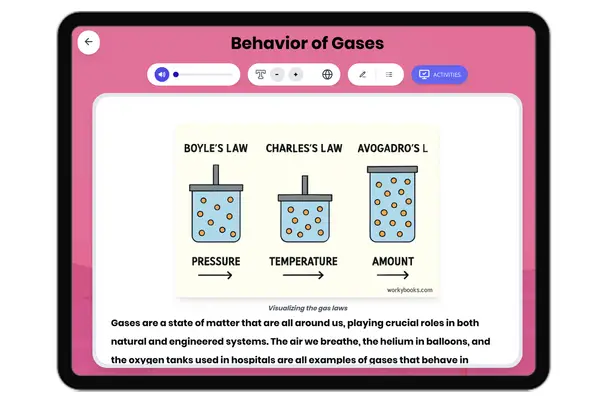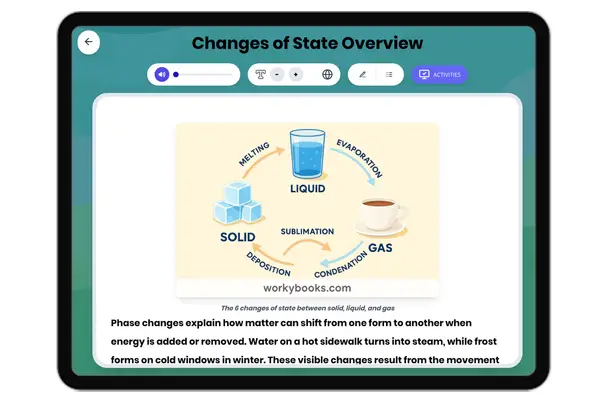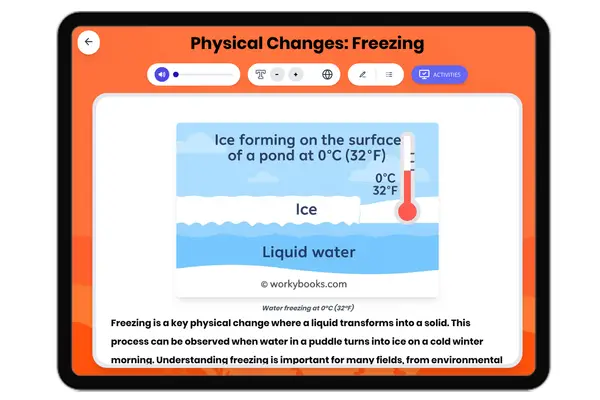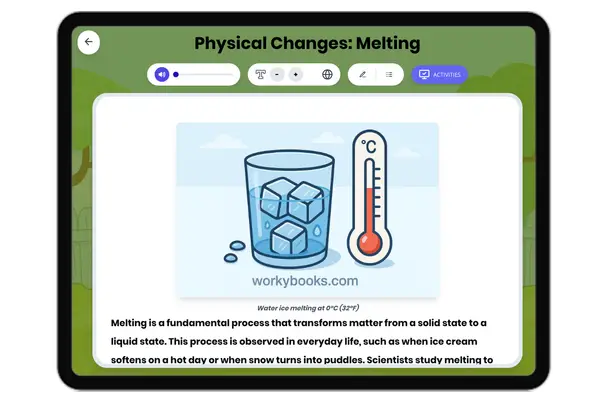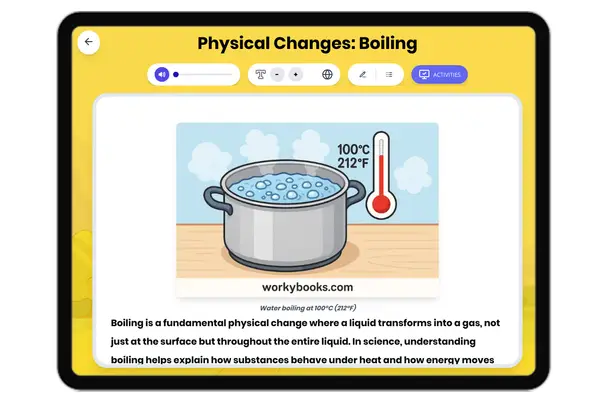Solids, Liquids, and Gases — Reading Comprehension
Premium Resource
Grades
- 5
- 6
- 7
- 8
Standards
- MS-PS1-4
PRINT+DIGITAL RESOURCE
This learning resource is available in interactive and printable formats. The interactive worksheet can be played online and assigned to students. The Printable PDF version can be downloaded and printed for completion by hand.
About This Reader
This comprehensive middle school science passage explains the scientific concepts behind the three common states of matter: solids, liquids, and gases. Aligned with NGSS standard MS-PS1-4, the text describes how particles behave in each state, with focus on shape, volume, and compressibility. Everyday examples such as ice cubes, liquid water, and steam are used to build understanding, and the passage briefly introduces plasma, the fourth state of matter, found in stars and lightning. The passage integrates real-world applications, cause-and-effect mechanisms, and connects to larger scientific principles, encouraging systems thinking. Included are a differentiated version for struggling readers, Spanish translations, glossary, multiple-choice quiz, writing prompts, and two graphic organizers. Audio integration is available for accessibility. This resource is ideal for science classrooms seeking NGSS-aligned materials and visual learning supports.
Perfect For:
👩🏫 Teachers
- • Reading comprehension practice
- • Auto-graded assessments
- • Literacy skill development
👨👩👧👦 Parents
- • Reading practice at home
- • Comprehension improvement
- • Educational reading time
🏠 Homeschoolers
- • Reading curriculum support
- • Independent reading practice
- • Progress monitoring
Reading Features:
📖
Reading Passage
Engaging fiction or nonfiction text
❓
Comprehension Quiz
Auto-graded questions
📊
Instant Feedback
Immediate results and scoring
📄
Printable Version
Download for offline reading
🔊
Read Aloud
Voice-over with word highlighting














